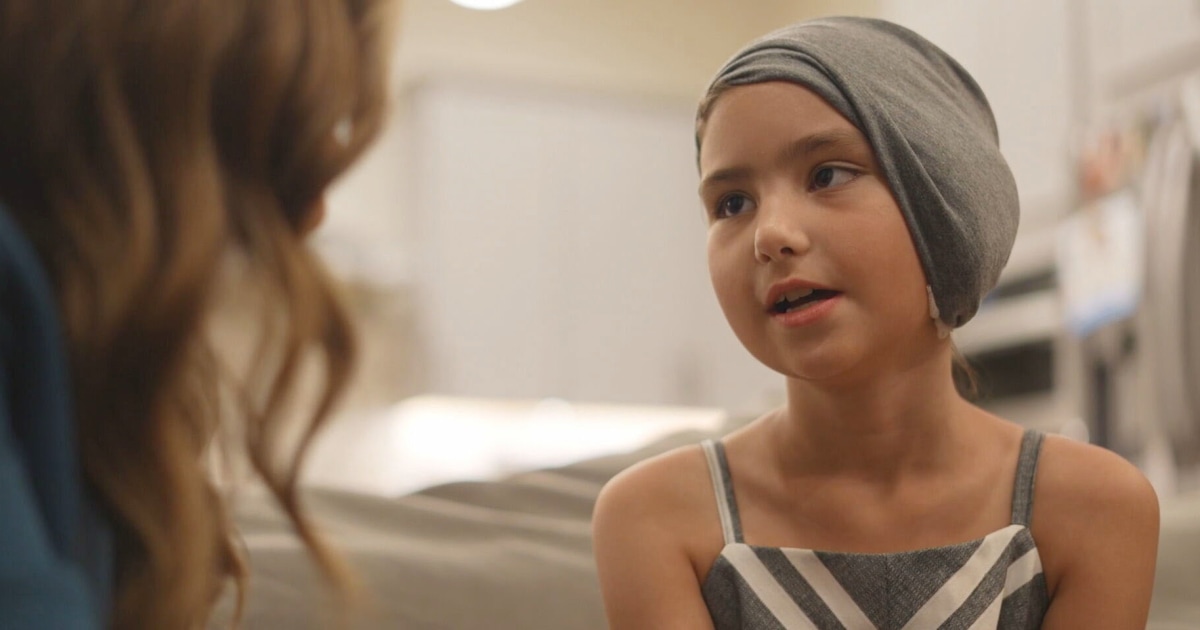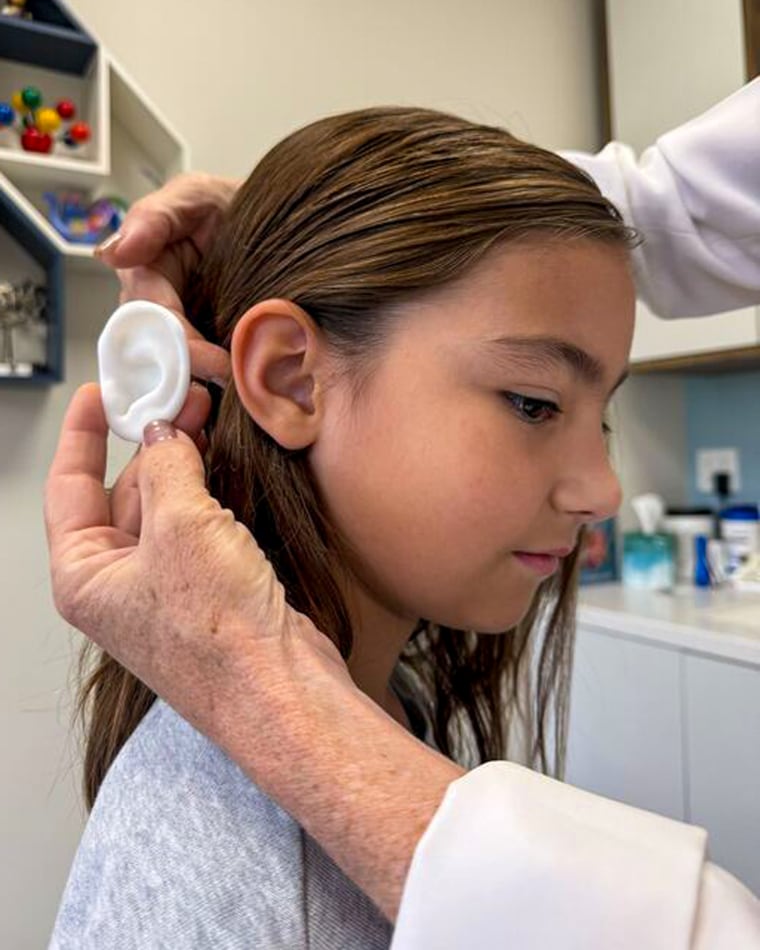
Minutes before a 10-hour surgical procedure, 8-year-old Olivia Olson sat on a hospital bed grinning. With quiet confidence she explained why the operation was so important to her.
“I think I look beautiful, and I don’t really care what other people think of me,” Olivia said. “I just want to get a big ear so people don’t bully me in the future.”
Olivia was born with a rare congenital condition, microtia, that prevents the development of the outer ear. Fewer than 200,000 people in the U.S. have microtia, according to the National Institutes of Health. Olivia’s right ear developed normally, but her left was never fully formed.
Her parents, Annie and Dave Olson, of Oro Valley, Arizona, knew from birth she would need surgery to reconstruct her ear. But up until the day of the operation last month, their insurance provider, Anthem Blue Cross and Blue Shield, had repeatedly refused to approve coverage for the procedure with the surgeon the Olsons wanted to use.

Only a handful of doctors in the U.S. regularly perform the operation Olivia needed. Most of them — including Dr. Sheryl Lewin, a pediatric craniofacial plastic surgeon in private practice based in Torrance, California — were out of network for the Olsons.
“The anatomy of an ear, it’s very complex, lots of detail, shadows, highlights, etc., so just physically recreating something that complex is very difficult. It’s rare to have a surgeon that specializes in it,” Lewin said. “If you don’t have a lot of experience, you’re going to end up with a lot of problems with this complicated of a surgery.”
The family chose Lewin after years of research. They believed her reconstruction method, which involved using a 3D-printed implant to rebuild the ear, was best for Olivia. (Another technique involves using the patient’s rib cartilage to reconstruct the ear.)
“We got a denial letter, and it was literally like a stab in the heart,” said Annie Olson. “We’re like, what are we going to do now?”
The family requested what’s known as a “gap exception,” which allows a patient to use in-network benefits for an out-of-network provider. The request was initially denied; instead, Anthem gave them a list of six in-network doctors, the Olsons said.
NBC News reached out to all six. Not a single one said they performed the surgery.
If you are dealing with bills that seem to be out of line or a denial of coverage, care or repairs, whether for health, home or auto, please email us at Costofdenial@nbcuni.com.
“Very few programs really offer somebody enough surgical time experience to when they leave the program and go out in private practice, where they’ll feel comfortable enough to do this kind of surgery,” said Dr. Arturo Bonilla, a pediatric microtia reconstructive surgeon in San Antonio. “It’s very specialized.”
Bonilla, who performs the rib-graft method for reconstructing ears, said he regularly requests gap exceptions for his patients — and while sometimes requests need to be appealed, they’re almost always approved by all insurers, including Anthem Blue Cross and Blue Shield.
“Rarely will we get somebody that says, ‘No, we’re still not going to approve it,’” he said.
The Olsons debated canceling the surgery but ultimately decided to keep the date and shield Olivia from the challenges they faced paying for it.

After multiple appeals and denials, the Olsons fundraised, borrowed money from family members and turned to credit cards. But that was not enough. Eventually, Dave Olson pulled a huge portion of the surgery’s roughly $100,000 cost from his 401(k).
He said he didn’t hesitate to take the money out of his retirement fund. “It is my responsibility as a parent to make sure that my kids have everything they need,” he said.
“If we knew that this was going to be the outcome, we would have been responsible people and started saving since the day she was born, versus finding out last minute, and then also having to be penalized because of pulling out of your 401(k) early,” Annie Olson said.
NBC News reached out to Anthem a couple days before Olivia’s surgery and was waiting for a complete response.
On the day of the surgery, with Olivia on the operating table, the Olsons finally received word that Anthem would grant the gap exception — a change the Olsons attributed to NBC News’ involvement.
“We went through literally what felt like a battle every day, day in and day out,” Dave Olson said. “Then at the 11th hour during the surgery, you say they’re gonna cover it. It’s like, what? Like, why? Why? Why now?”
In a statement to NBC News nearly two weeks after Olivia’s surgery, Anthem Blue Cross and Blue Shield said: “We are happy that the member was able to receive the treatment she needed. Even though the member’s plan does not cover out-of-network providers when an in-network provider is available, we were able to make a unique one-time exception to ensure her care was not delayed.”

Lewin, who performs about 120 microtia surgeries a year, said that in 2025, getting denials overturned and getting gap exceptions approved for microtia surgery has been a lot more challenging. She said in 2024, more than 90% of her Anthem patients’ gap exceptions were approved, or denied and overturned. In 2025, with the exception of Olivia, none of her Anthem patients have been approved.
“It’s just become kind of a very slow trend that’s very much peaked in the last year,” Lewin said. “It’s been rough, and we’ve had to work much harder to get a negotiation agreed upon.”
Anthem Blue Cross and Blue Shield didn’t respond to questions about Lewin’s claim that her patients have been denied gap exceptions this year. However, it said it is reaching out to Lewin to offer a potential in-network arrangement.
The financial details for Olivia’s case are still being finalized, but she said she is already excited for the future.
“When it’s fully recovered, I’m gonna be like, ‘OK, that was just a short little bump,’ and then I’ll just go on with the rest of my life,” she said.